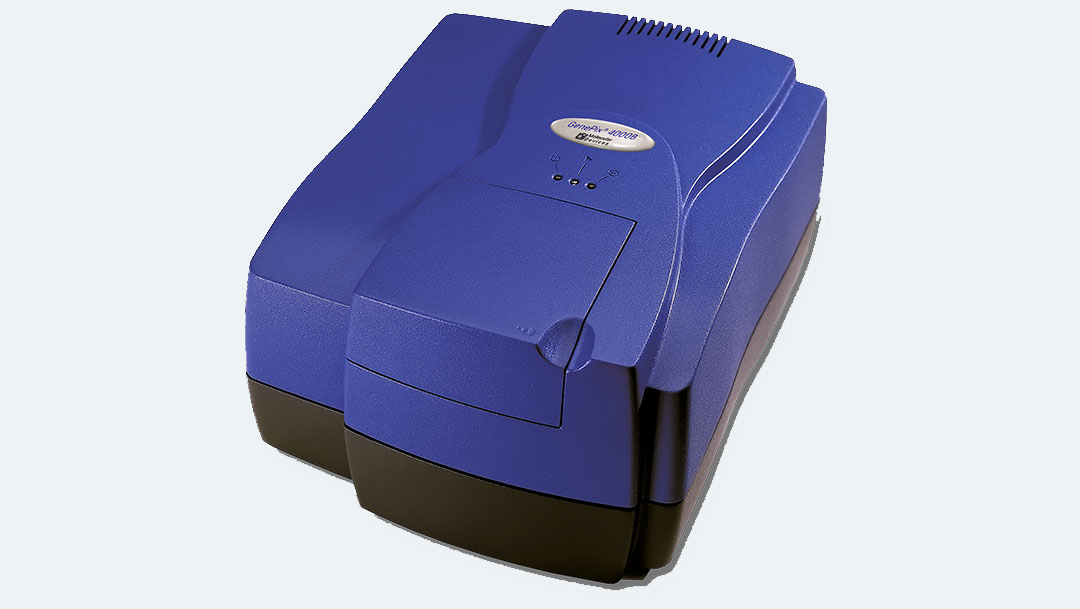Microarray System

Model: GenePix 4000B, Molecular Devices
Principle
Microarray technology is a high-throughput and versatile technology used for studying gene expression, detecting polymorphisms and mutations and for DNA homology analysis in both prokaryotic and eukaryotic genomic DNA. The microarray technology is based on the fact that complementary sequences of DNA can be used to hybridize specific immobilized DNA molecules called probes. This involves three steps: 1) Preparation of the microarray slide/chip by spotting the DNA (target) onto the chip or their in situ synthesis. 2) The second step involves mRNA or DNA isolation followed by fluorescent labeling of cDNA probes and hybridization of the sample to the immobilized target DNA. 3) Finally, hybridized slides are scanned using sophisticated software programs that allows for the relative quantification of the abundance of nucleic acids in a target.
Applications
Transcriptomics: Gene expression arrays, RNA interference (RNAi) arrays, microRNA (miRNA) arrays. The arrays are used for quantitive measurement of transcript levels and integration of the data with information relating to disease also enables mapping critical genomic regions.
Epigenomics: ChIP-on-chip arrays measure all protein-DNA interactions in an organism under various physiological conditions. The DNA methylation arrays reveal patterns of methylated DNA in cells.
Epigenomics: ChIP-on-chip arrays measure all protein-DNA interactions in an organism under various physiological conditions. The DNA methylation arrays reveal patterns of methylated DNA in cells.
Specifications
GenePix 4000B microarray scanner provides fast, high-quality imaging for two-color microarrays with ease-of-use in microarray scanning technology. Pixel resolution: 5-100μm. GenePix 4000B scanner automatically chooses photomultiplier gain values for fast and easy optimization of signal intensity and channel balance. Simultaneous dual-laser scanning. 532 nm and 635 nm solid-state lasers optimized for Cy3 and Cy5 or spectrally similar dyes.
GenePix 4000B microarray scanner provides fast, high-quality imaging for two-color microarrays with ease-of-use in microarray scanning technology. Pixel resolution: 5-100μm. GenePix 4000B scanner automatically chooses photomultiplier gain values for fast and easy optimization of signal intensity and channel balance. Simultaneous dual-laser scanning. 532 nm and 635 nm solid-state lasers optimized for Cy3 and Cy5 or spectrally similar dyes.
Contact
aef@thsti.res.in
| Equipment Details | Price | ||
|---|---|---|---|
| Government Organisation | Non-Government Organisation | ||
| Microarray System, Molecular Devices | Rs.550 | Rs.1100 | |
